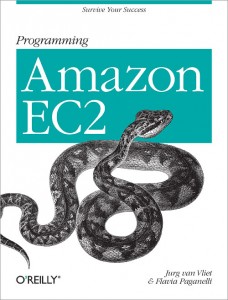
After a short historical introduction to the philosophy of the Amazon platform authors proceed to basics of the EC2 instance management (using Ubuntu as example) and describe how several real life web applications benefited from migration to Amazon infrastructure. High level architecture descriptions help to understand how all pieces of the Amazon platform come together – ELB, EC2, RDS, S3, SQS, SNS, etc. Examples are provided in PHP, Ruby and Java.
Don’t expect any secret knowledge to be revealed in this book. A lot of intricate details and answers to the questions that you will face when planning a migration to AWS or designing architecture for a new web application are left out of this book. At the same time the book gives a fairly good overview of how to make your application to be scaleble and highly available on AWS and can serve as a good starting point in your AWS journey.
Some of the recommendations and descriptions given in the book are outright sloppy. A couple of examples: the book recommends “You can choose an availability zone, but that doesn’t matter very much because network latency between zones is comparable to that within a zone“. But tests indicate that Cross Availability Zones latency can be 6 times higher than inner zone latency. For a network intensive application, better keep your instances crowded in the same zone.
Another example where you might want to go run your own tests before making a decision or look for another opinion “A disk is always slower than memory. If you run your own MySQL using local disks, that’s slow as well. But using disk-based operations in RDS is just horrible. Minimizing disk usage means implementing proper indexes, something you always want to do.” A very strong yet vague statement on RDS performance, where I’d really love to see a comparison in performance of MySQL installation on EC2+EBS vs. RDS and a list of what kind of MySQL fine-tuning will and will not work on RDS.
Another annoying bit about the book is that authors keep promoting their commercial Android client for AWS monitoring throughout all chapters. As I see it – if there are ads, the book should be free.
Bottom line: I see only two reasons why you might want to buy and read this book – learning about the history of AWS and learning how five selected web services designed their architecture when migrating to AWS.
Leave a Reply